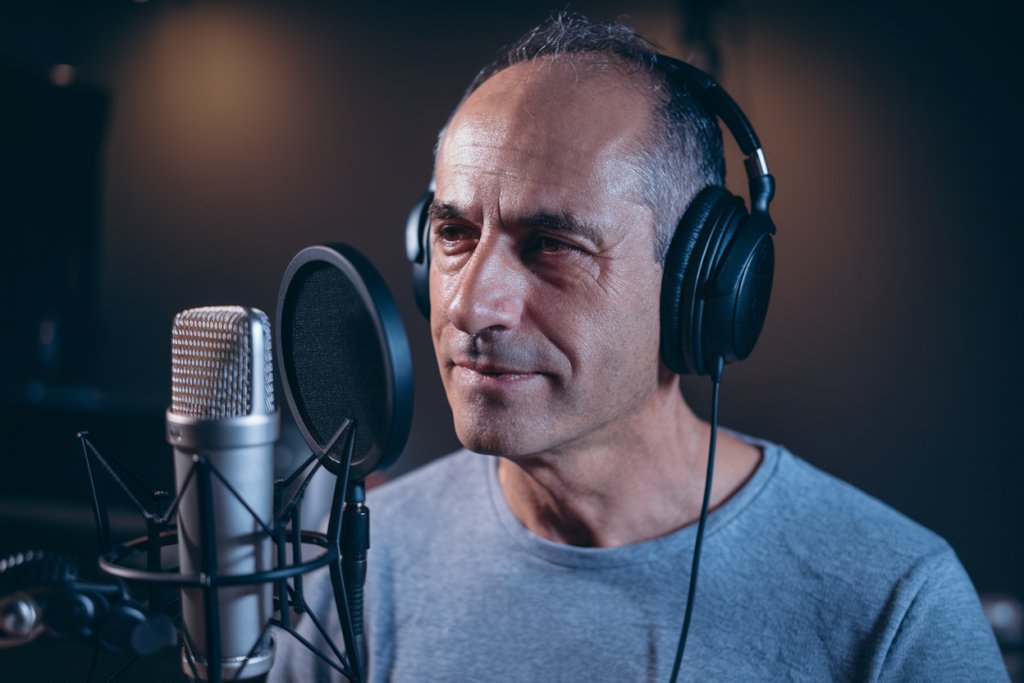Dubbing videos in Italian can transform your content and reach a wider audience. Whether you’re a filmmaker, educator, or content creator, mastering the art of dubbing opens up exciting possibilities. I’ve discovered that using the right method not only enhances the viewing experience but also helps convey emotions and messages more effectively.
Overview of Metodo Para Doblar Videos En Italiano
Metodo para doblar videos en italiano focuses on the techniques and processes used to create high-quality dubbed content in the Italian language. Understanding these methods enhances my ability to effectively communicate messages and emotions through video.
Key Techniques
- Script Translation
Accurate translation ensures that the original message retains its meaning while adapting to cultural nuances. - Voice Casting
Selecting appropriate voice actors is crucial for matching character personalities and conveying emotions authentically. - Recording
High-quality audio recording minimizes background noise, ensuring clarity and enhancing viewer engagement. - Synchronization
Aligning voiceovers with on-screen actions maintains continuity and allows for a seamless viewing experience. - Editing
Skilled editing integrates soundtracks, effects, and dialogue, creating a polished final product that resonates with viewers.
Benefits of Dubbing
Dubbing videos in Italian broadens audience reach by making content accessible to native speakers. It fosters an immersive experience, enabling viewers to connect more deeply with the material without language barriers. Additionally, it increases the potential for international collaboration among filmmakers, educators, and content creators seeking diverse markets.
By mastering these dubbing techniques, I can enhance any project’s quality while effectively communicating ideas across linguistic boundaries.
Key Features of the Method
The “Metodo para doblar videos en italiano” includes several essential features that contribute to effective video dubbing. Below are the key aspects that define this method.
Step-by-Step Process
- Script Translation: I start with an accurate translation of the script, ensuring that meaning and cultural nuances remain intact.
- Voice Casting: I select voice actors whose tones and styles align with character personalities, enhancing viewer connection.
- Audio Recording: I conduct high-quality audio recording sessions in a soundproof environment to reduce background noise interference.
- Synchronization: I synchronize voiceovers carefully with on-screen actions, maintaining continuity for a seamless viewing experience.
- Editing and Mixing: I perform skilled editing and mixing to produce a polished final product, ensuring clarity and consistency throughout.
| Tool | Purpose |
|---|---|
| Audio Editing Software | For editing voice recordings and adding effects |
| Microphones | To capture high-quality audio from voice actors |
| Soundproof Booth | To eliminate background noise during recording |
| Synchronization Software | For aligning audio tracks with video content |
| Translation Tools | To assist in accurate script translation |
Utilizing these tools effectively supports each step of the dubbing process, resulting in high-quality dubbed videos that resonate with Italian-speaking audiences.
Benefits of Using This Method
Using the “Metodo para doblar videos en italiano” offers significant advantages for creators. This method not only enhances content accessibility but also elevates overall production quality.
Improved Efficiency
Improved efficiency stems from a structured approach to dubbing. Following a clear process minimizes time spent on revisions and adjustments, allowing for quicker project completion. Precise script translation ensures that essential meanings remain intact, reducing misunderstandings during voice recording. Utilizing efficient audio editing tools streamlines the post-production phase, enabling faster turnaround times without sacrificing quality.
Enhanced Quality
Enhanced quality results from meticulous attention to detail throughout the dubbing process. Accurate script translation captures cultural nuances and emotional tones, ensuring authentic representation in Italian. Careful selection of voice actors aligns vocal performances with character personalities, creating believable portrayals. High-quality audio recording techniques eliminate background noise and ensure clarity, while synchronization with on-screen actions maintains viewer engagement. These elements combine to produce polished final products that resonate strongly with audiences, fostering deeper connections with the material presented.
Comparison with Other Methods
Comparing the “Metodo para doblar videos en italiano” with other dubbing methods reveals distinct advantages and unique approaches. Exploring traditional techniques and modern alternatives highlights how my method stands out.
Traditional Dubbing Techniques
Traditional dubbing techniques often involve a lengthy process characterized by script translation, casting voice actors, recording in studios, and extensive post-production. This approach can lead to discrepancies between the original content and the dubbed version due to cultural nuances or context loss during translation. Voice actors typically record their lines without seeing the visuals, resulting in potential misalignment with on-screen actions. While these methods have produced quality results over the years, they may lack efficiency compared to newer practices.
Modern Alternatives
Modern alternatives for dubbing include technologies like automated voice generation and AI-driven tools that enhance speed but compromise emotional depth. These methods utilize software to create voiceovers quickly; however, they often fail to capture subtle emotions or character nuances inherent in human performances. Additionally, while some AI solutions offer cost-effective options for creators working with limited budgets, they may not provide the same level of authenticity as skilled human voice actors. By emphasizing a structured approach combined with technology, my method balances efficiency and quality while ensuring an engaging viewing experience tailored specifically for Italian-speaking audiences.
Conclusion
Dubbing videos in Italian can truly transform how content connects with audiences. By implementing the “Metodo para doblar videos in italiano,” I’ve seen firsthand how a structured approach elevates both efficiency and quality. It’s exciting to witness how precise translation and careful voice casting breathe life into narratives, making them resonate deeply.
Utilizing top-notch tools throughout the dubbing process ensures that every project stands out. As creators, we have the opportunity to break language barriers while enhancing viewer engagement. Embracing these techniques not only enriches our work but also fosters meaningful connections within diverse markets. So let’s continue refining our craft and bringing more captivating stories to Italian-speaking audiences everywhere.








